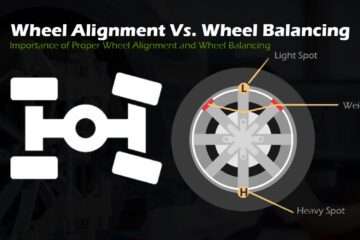Buy Tires Online has emerged as a convenient and widely embraced option for vehicle owners in today’s digital era. The accessibility and ease of online tire shopping offer customers a plethora of benefits, including the ability to browse a wide range of tire options from various brands, compare prices and specifications, read reviews from other buyers, and make informed decisions from the comfort of their homes.
Additionally, online platforms often provide detailed information about tire features, compatibility, and performance ratings, empowering customers to select the most suitable tires for their vehicles based on their specific needs and preferences. From the comfort of your home or office, you can browse through a wide selection of tires, compare prices, read reviews, and have them delivered directly to your doorstep or to a local installer. However, like any online purchase, there are important considerations to keep in mind to ensure a smooth buying experience and optimal performance from your new tires.

1. Convenience of Buying Tires Online
One of the primary advantages to buy tires online is the convenience it offers. You can shop at any time of the day or night, without being limited to store hours. This flexibility is especially beneficial for busy individuals who may not have the time to visit multiple tire shops in person.
Additionally, online tire retailers often have a vast inventory, allowing you to find the exact tire model, size, and brand that suits your vehicle and driving needs. This extensive selection is typically not available at brick-and-mortar stores, where space constraints may limit the variety of tires on display.
- Wide Selection: Online tire retailers offer an extensive range of tire brands, sizes, and types. You can easily find the perfect fit for your vehicle without leaving your home.
- Comparison Shopping: Websites like Tire Rack provide detailed information, customer reviews, and performance ratings for various tires. You could compare tires prices, features, and tires specifications to make the correct decision.
- Delivery and Installation: Most online stores allow you to choose a local tire shop for installation. They’ll handle everything from mounting to disposal of your old tires.
- Time-Saving: Skip the hassle of visiting multiple physical stores. With a few clicks, you can order tires and have them delivered to your preferred location.
You May Also Check
Bridgestone Ecopia H/L 422 Plus Review & Rating – A Competitive Tire
While your driving are crucial, regular maintenance cannot be overlooked. Remember, tires are a critical safety component of your vehicle.…
2. Price Comparison

Another benefit of online tire shopping to buy tires online is the ability to easily compare prices across multiple retailers. With a few clicks, you can quickly assess different options and choose the best deal that fits your budget. Many online platforms also offer discounts, promotions, and bundled packages that can lead to cost savings compared to traditional tire purchases.
3. Access to Reviews and Information
Before making a purchase, it’s essential to gather as much information as possible about the tires you’re considering. Online platforms provide access to detailed product descriptions, specifications, customer reviews, and ratings. This wealth of information empowers consumers to make informed decisions based on factors such as tire performance, durability, tread life, and handling characteristics.
4. Installation Options

While buying tires online is convenient, it’s crucial to plan for installation. Some online retailers offer tire installation services through partnerships with local garages or tire shops. This option allows you to schedule a professional installation at a convenient location near you when you buy tires online. Alternatively, to buy tires online you can choose to have the tires delivered to your preferred installer for mounting and balancing.
5. Considerations and Tips When Buying Tires Online
Despite the convenience, there are several considerations to keep in mind when you buy tires online:
You May Also Check
Starfire Solarus AS All-Season Tires Clear Reviews
The Starfire Solarus AS All-Season Tires have garnered widespread acclaim from users who are not only impressed by their exceptional […]
- Correct Tire Size: Refer to your vehicle’s owner’s manual or the sidewall of your current tires to determine the correct tire size. The size is typically represented as a series of numbers and letters, such as “P215/65R15” or “225/55ZR17.”
- Tire Type: Consider factors such as seasonality (summer, winter, all-season), driving conditions, and performance requirements when choosing tire types.
- Consider your driving habits, climate, and terrain. Different tires excel in wet conditions, snow, or off-road environments.
- Choose tires suitable for your vehicle type (sedan, SUV, truck) and driving style (daily commuting, long trips, or spirited driving).
- Research Tire Brands and Models: Explore different tire brands and models to find ones that suit your requirements and budget. Look for reviews, ratings, and customer feedback to gauge the performance and reliability of each tire option.
- Evaluate whether you want top-tier performance or are comfortable with budget-friendly options. Premium brands often offer better grip, longevity, and handling, but they come at a higher price.
- Warranty and Return Policy: Review the warranty coverage and return policies of the retailer and the tire manufacturer where you Buy Tires Online. Understand the terms and conditions regarding warranty claims, tread wear guarantees, and returns in case of defects or dissatisfaction.
- Installation Costs: Factor in installation costs when comparing prices. Some retailers may offer free or discounted installation services as part of promotions.
- Understand Your Tire Needs: Consider factors such as the climate you drive in (e.g., summer, winter, all-season tires), your typical driving conditions (e.g., highway, off-road), and your desired performance characteristics (e.g., handling, fuel efficiency, tread life).
- Compare Prices and Deals: Visit multiple online tire retailers to compare prices, promotions, and discounts. Take note of any bundled packages that may include services like tire installation, balancing, and alignment.
- Select Installation Options: Decide whether you want the tires delivered directly to your address or to a local installer for professional mounting and balancing. Some online retailers offer partnerships with installation centers, allowing you to schedule convenient installation appointments.
- Place Your Order: Add the desired tires to your cart and proceed to checkout. Provide accurate shipping and billing information, and choose your preferred payment method. Review your order details, including tire size, quantity, price, and any additional services or warranties selected.
- Track Your Order: Once your order is placed, monitor its progress through the retailer’s tracking system. You should receive updates on shipping, delivery dates, and any installation appointments if applicable.
- Schedule Installation: If you opted for delivery to a local installer, contact them to schedule a convenient date and time for tire installation, balancing, and alignment. Ensure that the installer is equipped to handle your specific tire size and type.
- Inspect and Maintain Your Tires: Upon installation, inspect the tires for any damage or defects. Follow the manufacturer’s recommendations for tire maintenance, including proper inflation, regular rotation, and periodic inspections for wear and tread depth.
- Use tools like Tire Rack’s Tire Decision Guide to find the right tires based on your vehicle and preferences.
- Read customer reviews and check test results to ensure quality and reliability.
How do I choose between all-season and summer tires?
Choosing between all-season and summer tires depends on several factors, including your local climate, driving habits, and performance preferences. Let’s explore the differences and considerations for each type:
You May Also Check
Fullway HP108 All-Season Passenger Car Performance Radial Tire Clear Reviews
The Fullway HP108 All-Season Passenger Car performance radial tires have garnered widespread acclaim from users who are not only impressed…
Summer Tires
- Optimal Performance:
- Designed for temperatures above 7°C, summer tires excel in warm weather.
- They provide excellent grip on dry and wet roads during hot conditions.
- Ideal for places where temperatures frequently exceed 35°C.
- Limitations:
- Summer tires harden when temperatures drop below 7°C, reducing their effectiveness in winter.
- On wet ground, braking distances are longer compared to certified winter tires.
- Not suitable for snowy conditions.
- Safety Reminder:
- Driving in snow with summer tires significantly increases braking distance and poses risks.
All-Season Tires
- Versatility:
- All-season tires (also called 4-season tires) are hybrid tires comfortable in both cold (down to -10°C) and hot (up to 30°C) weather.
- They combine features of both summer and winter tires.
- Performance:
- All-season tires allow safe driving in dry, wet, and snowy conditions.
- While not as effective as dedicated winter tires in extreme snow, they provide mobility and safety in most snowy situations.
- Trade-Off:
- Above 7°C, all-season tires have slightly longer braking distances on both wet and dry surfaces compared to summer tires.
Remember:
- Location Matters: Consider your local climate. If snow persists into spring, all-season tires are safer.
- Performance Priorities: If you prioritize performance and live in a warm region without snow, summer tires may be a better choice.
Choose wisely based on your needs and driving environment!
Dive into Tire’s Sidewall Informations
Let’s dive into the essential details found on a tire’s sidewall. These markings provide crucial information about your tire’s dimensions, construction, operating characteristics, and manufacturer. Understanding these codes can help you make informed decisions when buying tires.
- Tire Type (P-Metric, LT, ST, T):
- The first letter indicates the tire type:
- “P”: Passenger (often called P-Metric).
- “LT”: Light Truck.
- “ST”: Special Trailer.
- “T”: Temporary.
- The absence of a letter indicates Euro-Metric tires.
- Euro-Metric tires may have different load capacities than P-Metric tires.
- The first letter indicates the tire type:
- Tire Width (Section Width):
- The number following the letter represents the approximate section width (sidewall to sidewall) in millimeters.
- Larger numbers indicate wider tires.
- Aspect Ratio:
- The aspect ratio is expressed as a percentage of sidewall height relative to the tire’s section width.
- For example, if the aspect ratio is 60, the sidewall height is approximately 60% of the tire’s width.
- Construction Type:
- The “R” stands for radial construction, which is the industry standard for passenger car and light truck tires.
- A “B,” “X,” or “-” instead of “R” indicates bias-ply construction.
- Rim Diameter:
- The number represents the rim or bead diameter in inches.
- For instance, “16” means that the tire fits a 16-inch rim.
- Service Description (Load Index and Speed Symbol):
- The load index (e.g., 97) represents the maximum load the tire can carry at the speed indicated by the speed symbol.
- The speed symbol (e.g., V) reflects handling characteristics after installation.
- Consult load index and speed rating charts for precise values.
- DOT Code and Tire Identification Number (TIN):
- The “DOT” insignia confirms the tire’s compliance with safety standards.
- The TIN includes:
- Manufacturer identification (first group of letters/numbers).
- Tire size (second group, no more than two symbols).
- Other significant tire characteristics (third group, no more than four symbols).
conclusion (Buy Tires Online)
Buy tires online offers convenience, price transparency, and access to a wide range of options. By considering factors such as tire size, type, brand reputation, and installation services, you can make a well-informed purchase that enhances your vehicle’s performance and safety on the road.




